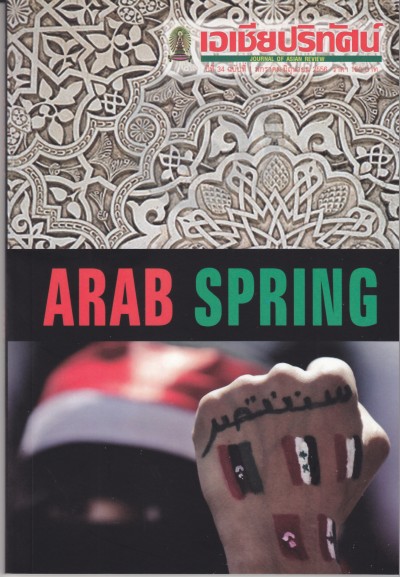ความขัดแย้งสามจังหวัดชายแดนภาคใต้ของไทยในบริบทการเปลี่ยนแปลงทางการเมืองกับข้อสังเกตบางประการ
Main Article Content
บทคัดย่อ
ผลการศึกษาพบว่า ปัญหาความขัดแย้งสามจังหวัดชายแดนภาคใต้ ที่ประกอบด้วย ยะลา ปัตตานี และนราธิวาส แบ่งออกเป็นสองส่วน ส่วนแรก ความขัดแย้งภายในที่ต่อเนื่องมานับจากอดีตที่มีความสัมพันธ์ระหว่างพื้นที่สามจังหวัดชายแดนภาคใต้กับการเมืองการปกครองจากส่วนกลางที่แสดงออกจากชนชั้นนําของรัฐจารีตนับตั้งแต่สมัยอยธุยาที่มีการทำสงครามระหว่างอยธุยากับปัตตานีเพื่อการขยายอํานาจต่อเนื่องถึงธนบุรีและรัตนโกสินทร์ จนมีการจัดตั้งการปกครองภูมิภาคแบบมณฑลเทศาภิบาลในรัชสมัยพระบาทสมเด็จพระจลุจอมเกล้าเจ้าอยู่หัว รัชกาลที่ห้า ที่สร้างรัฐสมัยใหม่หรือรัฐชาติ และแม้ภายหลังการเปลี่ยนแปลง การปกครอง พ.ศ. 2475 ยังคงมีความขัดแย้งอย่างต่อเนื่องที่สําคัญ คือ จอมพล ป. พิบูลสงคราม ขณะดํารงตําแหน่งนายกรัฐมนตรี แม้สมัยหลังจะพยายามแก้ปัญหาแต่ยังคงมีความขัดแย้งเป็นระยะจนกลายเป็นความรนุแรง ความไม่ไว้วางใจ ความไม่เป็นธรรม ความอยุติธรรม ความล้าหลัง และความด้อยพัฒนา ที่ทำให้เกิดความคับข้องใจของประชาชนในพื้นที่สะสมจนกลายเป็นปัญหาเชิงโครงสร้างที่ก่อให้เกิดผลกระทบอย่างกว้างขวาง เป็นปัญหาที่มีที่มาและต่อเนื่องจากอดีต การยุบศูนย์อํานวยการบริหารจังหวัดชายแดนภาคใต้ (ศอ.บต.) และกองบัญชาการ ผสมพลเรือน ตํารวจ ทหาร ที่ 43 (พตท. 43) ขณะ พ.ต.ท. ทักษิณ ชินวัตร ดํารงตําแหน่งนายกรัฐมนตรีเท่ากับเปิดโอกาสให้กลุ่มผู้ก่อความไม่สงบปฏิบัติการในพื้นที่อย่างเป็นรูปธรรม ส่วนที่สอง ความขัดแย้งภายนอกเป็นความขัดแย้งระดับสากล จากความขัดแย้งทางศาสนาและวัฒนธรรมหรือตะวันตกกับมุสลิมหัวรุนแรง จนก้าวสู่สามจังหวัดชายแดนภาคใต้ พื้นที่ที่มีความอ่อนไหวมากที่สุดในเอเชียตะวันออกเฉียงใต้ จนกลายเป็นการก่อการร้ายที่มีแนวโน้มทวีความรุนแรงเพิ่มขึ้น การบรรจบของทั้งปัจจัยภายในและปัจจัยภายนอกทำให้ปัญหามีความรนุแรงเพิ่มขึ้นทำให้การแก้ปัญหาต้องใช้วิธีที่หลากหลายเพื่อให้การแก้ปัญหามีประสิทธิภาพ และประสิทธิผลที่ตั้งอยู่บนพื้นฐานของผลประโยชน์แห่งชาติและผลประโยชน์ของประชาชนทุกกลุ่มให้มากที่สุด
Conflict in Thailand’s Three Southern Border Provinces in the Context of Political Changing with the Critical Remark
The objective of this article is to describe and analyze the conflict in Thailand’s three southernmost provinces amidst the country’s political change with a view to seeing how this conflict is related to this change and how the conflict has accumulated from the past to the present time. The article consists of four parts: the conflict during the Ayutthaya period which came to an end in 1767 (2310 B.C.), the conflict during the Thonburi and Rattanakosin periods before the change of government in 1932 (2475 B.E.), the conflict in the period between 1932 (2475 B.E.) and 2001 (2544 B.E.), and the conflict as it has developed from Prime Minister Thaksin Shinawatra’s to the present.
The article shows that the conflict in three southern border provinces, namely Yala, Pattani and Narathiwat, can be divided into two parts. Firstly, the continued internal conflicts originating in the past were relevant to relations between these provinces and the central government. This power relationship can be seen in the war waged against Pattani by the influential rulers of the Ayutthaya era as a means of power expansion. The power expansion continued to the Thonburi and Rattanakosin periods. During the reign of King Chulalongkorn a new local administrative system, the Tesaphiban, was introduced as part of his effort to modernize Siam. In the post-1932 (2475 B.E.) period conflict in the three southern provinces was still raging, especially during the premiership of Field Marshal Phibun. Despite efforts to solve it, the conflict has unfortunately continued and further developed into a structural problem involving mistrust, injustice, backwardness and underdevelopment. All this has resulted in the frustration on the part of the local people with widespread consequences. The paper thus concludes, first, that the problem has been derived from sources of structural power relations and accumulation of traumatic historical experiences. Secondly, external or international conflict involving both religious cultural differences, as evident in the antagonism between the West and radical Islam has also had an impact on the three southern border provinces, which together represent a most sensitive area in Southeast Asia. The convergence of the external and internal dimensions of the conflict has exacerbated it; its solution therefore requires various methods which take both the national interest and those of the specific groups into consideration.


